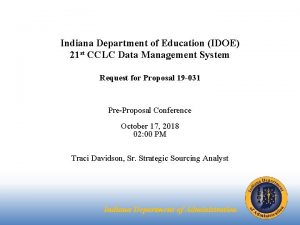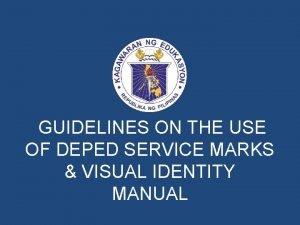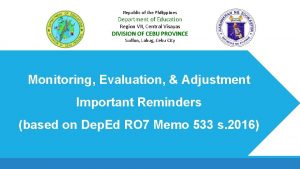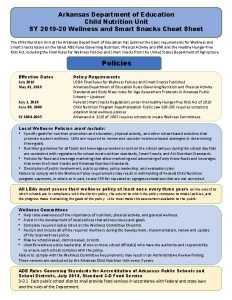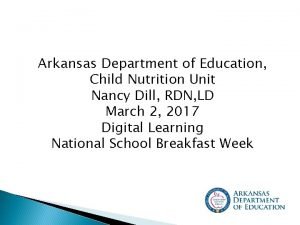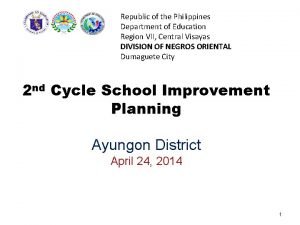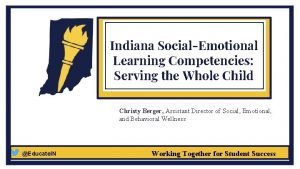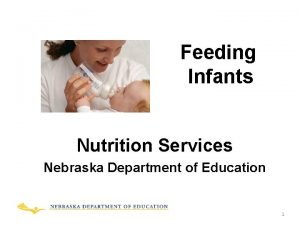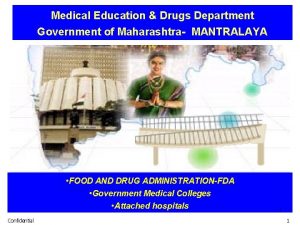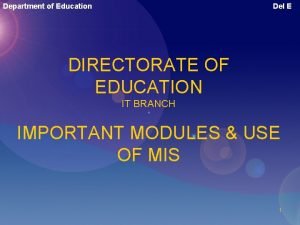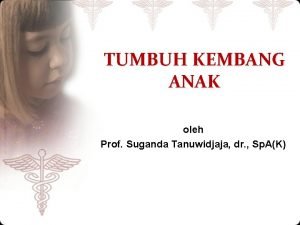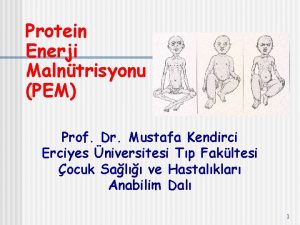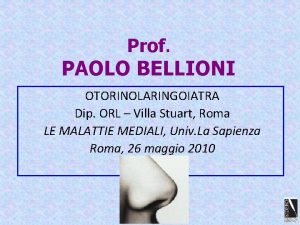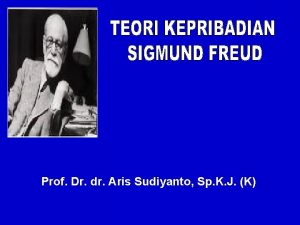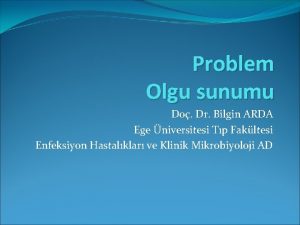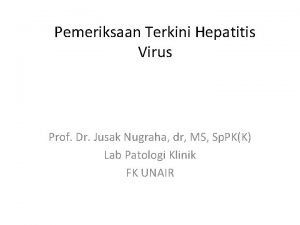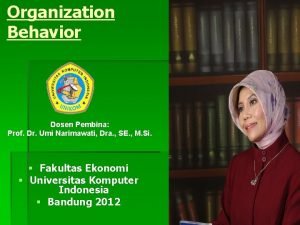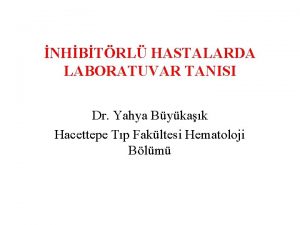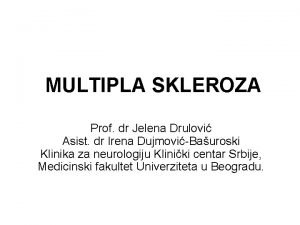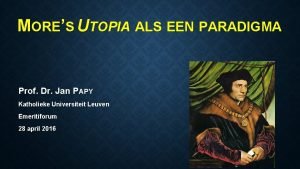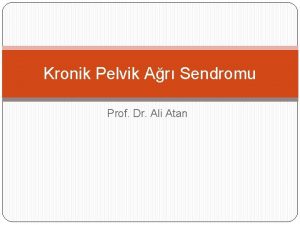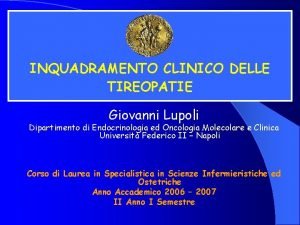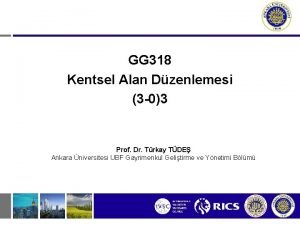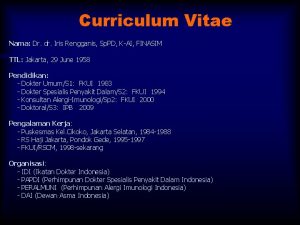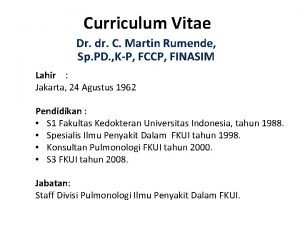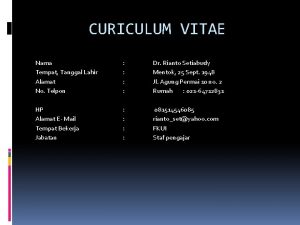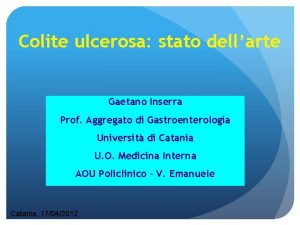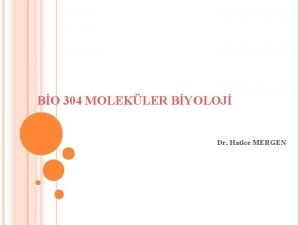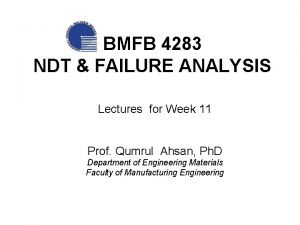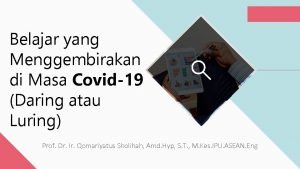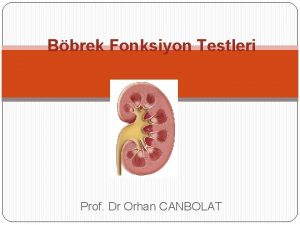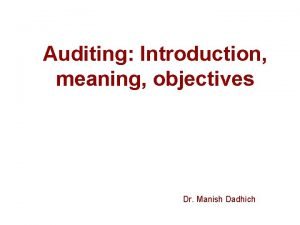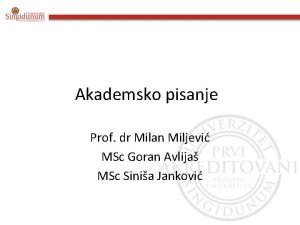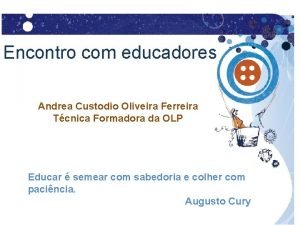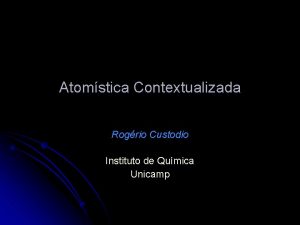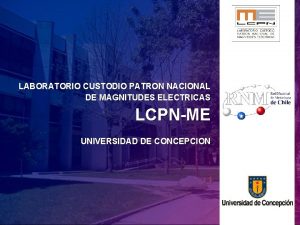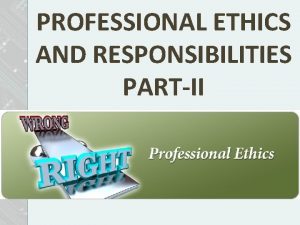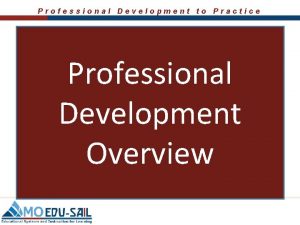Prof Zhanina U Custodio Professional Education Department LET














































































































- Slides: 110

Prof. Zhanina U. Custodio Professional Education Department LET REVIEW Philippine Normal University National Center for Teacher Education Manila

CHILD AND ADOLESCENT DEVELOPMENT

ADULTHOOD ADOLESCENCE PUBERTY CHILDHOOD BABYHOOD INFANCY PRE-NATAL

CONCEPTS

CONCEPTS: • • Growth • Development • Maturation • ZPD • • Heredity Environment • Theory Ethological Theory Attachment Psychosexual Theory Psychosocial Theory Ecological Theory Sociohistoric- Cognitive/ Linguistic Theory Other Theories

GROWTH Pertains to the physical change and increase in size Can be measured quantitatively Indicators of growth are height, weight, bone size and dentition DEVELOPMENT Involves increase in the complexity of function and skill progression The capacity and skill of a person to adapt to the environment Pertains to the behavioral aspect of growth MATURATION Consists of changes that occur relatively independent of the environment Usually considered to be genetically programmed- the result of heredity

HEREDITY The process of transmitting biological traits from parents to offspring through genes, the basic units of heredity ENVIRONMENT Refers to the surrounding condition that influences growth and development THEORY Ideas based on observations and other kinds of evidences which are organized in a systematic manner Used to explain and predict the behaviors and development of children and adults ZPD (Zone of Proximal Development) Zone of proximal development wherein the child acquires new skills and information with the help or assistance of an adult or an adult peer

PRINCIPLES OF GROWTH and DEVELOPMENTp. 5

PRINCIPLES OF HEREDITY ¡ PRINCIPLE OF REPRODUCTION “LIKE BEGETS LIKE”

PRINCIPLES OF HEREDITY ¡ PRINCIPLE OF VARIATION “No two individuals are exactly alike. ”

PRINCIPLES OF HEREDITY ¡ PRINCIPLE OF CHANCE

PRINCIPLES OF HEREDITY ¡ Dominance and Recessiveness

PRINCIPLES OF HEREDITY ¡ Principle of Sex-linked Characteristics

PRINCIPLES OF DEVELOPMENT Development is an orderly process which follows a predictable patterns: CEPHALO- CAUDAL TREND

PRINCIPLES OF DEVELOPMENT Development is an orderly process which follows a predictable patterns: PROXIMO – DISTAL TREND

PRINCIPLES OF DEVELOPMENT Development is the result of the interaction of maturation and learning. Development proceeds by stages.

IMPLICATIONS v. It helps us to know what to expect and when to expect it. v It gives the adult information as to when to stimulate and not to stimulate the child. v. It makes possible for parents, teachers and others who work with children to prepare the child ahead of time for the changes that will take place in his body, his interests, or his behavior.

STAGES OF HUMAN DEVELOPMENT

Prenatal stage • The prenatal period in many aspects is considered as one of the most- if not the most, important period of all in the life span of a person. • This person begins at conception and ends at birth and approximately 270 to 280 days in length or nine calendar months.

PRE-NATAL STAGE (fertilization – birth) ¡ GERMINAL PERIOD Fertilization – end of 2 nd wk. ¡ EMBRYONIC PERIOD End of 2 nd wk. – end of 2 nd mo. ¡ FETAL PERIOD End of 2 nd mo. – birth

GERMINAL PERIOD Fertilization – end of 2 nd wk.

EMBRYONIC PERIOD End of 2 nd wk. – end of 2 nd mo.

FETAL PERIOD End of 2 nd mo. – birth

3 WEEKS 12 WEEKS 6 WEEKS 14 WEEKS 8 WEEKS 18 WEEKS

20 WEEKS 27 WEEKS 37 WEEKS BIRTH

infancy stage • Infancy is the transition period intervening between birth and two weeks of life and identified as the shortest of all developmental period. • The roots of language are crying, cooing and babbling.

STAGE 2: INFANCY STAGE (Birth – end of 2 nd week) ¡ PARTUNATE PERIOD : Birth up to 15 – 30 minutes ¡ NEONATAL PERIOD : From cutting & tying of the umbilical cord up to the end of second week.

EMOTIONAL DEVELOPMENT OF INFANTS ¡ ATTACHMENT BEHAVIOR developed psychologically between an infant and the caregiver. John Bowlby (1969) developed psychologically between an infant and the caregiver. o Attachment System – Interaction between the infant and the caregiver which evolves from the infant’s restlessness; and such helplessness maintains intimacy. ¡

babyhood stage • Developmental tasks include: learning to walk, learning to take solid foods, having organs of elimination under partial control, achieving reasonable psychological stability especially in hunger rhythm and sleep, relating emotionally to parents and siblings, and learning the foundations of speech • Common emotional patterns involve anger, fear, curiosity, joy and affection.

STAGE 3: BABYHOOD ¡ Covers from the end of second week up to the end of second year.

Babyhood – Characteristics: ¡ True Foundation age ¡ Age of rapid growth and changes ¡ Age of increasing individuality and decreasing dependency ¡ Age of sex role typing

Early childhood • Names given to describe the stage are: problem or troublesome age, toy age, preschool age, pre-gang age, exploratory and the questioning age • Developmental tasks include: control of elimination, self-feeding, self-dressing and doing some things without much help, development of motor skills that allow him to explore and do things to satisfy his curiosity and acquisition of adequate vocabulary to communicate his thoughts and feelings with those around him

STAGE 4: EARLY CHILDHOOD End of 2 nd year – 6 years old ¡ ¡ The preschool child should be given as much as physical experience as possible and play activities to learn by doing and to develop his intellectual capacity. This stage is also regarded as the teachable moment for acquiring skills because children enjoy the repetition essential to learning skills; they are adventuresome and like to try new things and have already learned skills to interfere with the acquisition of the new ones.

LATE childhood • Late childhood is the period for learning the basic skills in life. • Names used to describe the stage are: troublesome age, sloppy age, quarrelsome age, elementary school age, critical period in the achievement drive, gang age and age of conformity. • Children in this stage win recognition by being able to do things.

STAGE 5: LATE CHILDHOOD 6 years of age – sexual maturity ¡ Developmental tasks include: learning physical skills necessary for group and organized games; learning to get along with age-mates and members of his family and community; learning fundamental skills in reading, writing and numeracy; develop appropriate masculine or feminine social roles; develop healthy self-concept and conscience; achieve personal independence by being able to perform life skills; learn to perform the different roles expected of him and think rationally to adjust to situations; make decisions and solve problems

PUBERTY STAGE • The word growth spurt refers to the rapid acceleration in height and weight that marks the beginning of adolescence. • Considered as unique and distinctive period and characterized by certain developmental changes that occur at no other time in the life span • Manifested in both internal and external changes in the body with both the primary and secondary sex characteristics

STAGE 6: PUBERTY ¡ PRE-PUBESCENT : overlaps with the closing year or two of childhood stage. ¡ PUBESCENT : The exact dividing line between childhood and adolescence. ¡ POST-PUBESCENT: overlaps the opening year or two of the adolescence stage. 10/12 to 13/14

STAGE 6: PUBERTY ¡ BOYS’ 10/12 to 13/14 CONCERNS ¡ NOCTURNAL EMISSIONS ¡ SECONDARY SEX CHARACTERISTICS ¡ LACK OF INTERESTS IN GIRLS

STAGE 6: PUBERTY ¡ GIRLS’ CONCERNS ¡ MENARCHE ¡ MENSTRUATION ¡ SECONDARY SEX CHARACTERISTICS ¡ LACK OF SEX APPEAL 10/12 to 13/14

STAGE 6: PUBERTY ¡ ¡ ¡ 10/12 to 13/14 BOYS AND GIRLS’ CONCERNS SEX ORGANS BODY DISPROPORTIONS AWKWARDNESS AGE OF MATURING MASTURBATION

STAGE 6: PUBERTY ¡ PSYCHOLOGICAL 10/12 to 13/14 HAZARDS ¡ Tendency to develop unfavorable concepts ¡ To become underachievers ¡ Unwillingness to accept changed bodies or socially approved sex roles ¡ Deviant sexual maturing

ADOLESCENCE • Adolescence is the age when the individual becomes integrated into society of adults; the age when the child no longer feels that he is below the level of his elders but equal, at least in rights. • The developmental tasks of adolescence are focused on the developing independence in preparation for adulthood and in establishing a sense of identity.

STAGE 7: ADOLESCENCE ¡ EARLY ADOLESCENCE: “TEEN-AGE YEARS” (13 -17) ¡ LATE ADOLESCENCE: Covers from 17 years of age up to age of “Legal Maturity”.

STAGE 7: ADOLESCENCE ¡ ¡ ¡ ¡ RECREATIONAL INTERESTS PERSONAL INTERESTS SOCIAL INTERESTS EDUCATIONAL INTERESTS VOCATIONAL INTERESTS RELIGIOUS INTERESTS IN STATUS SYMBOLS

ADULTHOOD • The need for love and intimacy are met in adult life, becomes more fulfilling in marriage, with the involvement of commitment • The need for generativity is through achievement. Burn out and alienation become a problem with work. • Moral development possesses responsibility for the welfare of others. .

STAGE 8: ADULTHOOD ¡ EARLY ADULTHOOD: 18 – 40 Years old ¡ MIDDLE ADULTHOOD: 40 – 60 Years old ¡ LATE ADULTHOOD: 60 years old - Death

EARLY ADULTHOOD 18 – 40 Years old ¡ ¡ REPRODUCTIVE AGE SETTLING DOWN-AGE

STAGE 9: MIDDLE ADULTHOOD 40 – 60 Years old ¡ PERIOD OF SOCIAL ISOLATION ¡ PERIOD OF EMPTY-NEST

OLD AGE • Composed of individuals at and over the age of 65, most of whom have retired from work • Most individuals in this late years begin to show slow, physical, intellectual and social activities.

STAGE 10: LATE ADULTHOOD 60 years old - Death ¡ ¡ PERIOD OF DECLINE THE CLOSING CURTAIN OF THE LIFE-SPAN

THEORIES p. 2


The Psychoanalytic Perspective § Freud’s theory proposed that childhood sexuality and unconscious motivations influence personality

PSYCHOANALYTIC THEORY - Freud ID EGO SUPER EGO

PSYCHOANALYTIC THEORY ID EGO Impulsive Pleasure-oriented Mostly unconscious Rational Planning Mostly conscious SUPEREGO Oughts/Shoulds Right/Wrong Mostly unconscious

PSYCHOANALYTIC THEORY SUPER EGO CONSCIENCE EGO IDEAL E G O

PSYCHOANALYTIC THEORY

Personality Structure Ego Conscious mind Unconscious mind Superego Id § Freud’s idea of the mind’s structure

Personality Development Freud’s Psychosexual Stages Stage Focus Oral (0 -18 months) Pleasure centers on the mouth-sucking, biting, chewing Anal (18 -36 months) Pleasure focuses on bowel and bladder elimination; coping with demands for control Pleasure zone is the genitals; coping with incestuous sexual feelings Phallic (3 -6 years) Latency (6 to puberty) Dormant sexual feelings Genital (puberty on) Maturation of sexual interests

PSYCHOANALYTIC THEORY


Socioemotional Development • Erikson (1902 -1994) • Theory emphasizes lifelong development • Eight psychosocial stages of development • Each stage represents a developmental task – Crisis that must be resolved © 2008 competence The Mc. Graw-Hill Companies, or Inc. weakness – Personal



HAVIGHURSTS’S Developmental Tasks During Life Span • (Robert Havighurst: teachable moments) • Infancy - Early Childhood (birth to 5 years) • Middle Childhood (6 to 12 years ) • • Adolescence (13 to 18 years) Early adulthood (19 to 29 years) Middle Adulthood (30 -60 years) Later Maturity (60>)

THE DEVELOPMENT TASK Infancy and Early Childhood • • Learning to walk. Learning to take solid foods Learning to talk Learning to control the elimination of body wastes • Learning sex differences and sexual modesty • Forming concepts and learning language to describe social and physical reality. • Getting ready to read

THE DEVELOPMENT TASK Age Birth to 6 - 12 • • • Learning physical skills necessary for ordinary games. Building wholesome attitudes toward oneself as a growing organism Learning to get along with age-mates Learning an appropriate masculine or feminine social role Developing fundamental skills in reading, writing, and calculating Developing concepts necessary for everyday living. Developing conscience, morality, and a scale of values Achieving personal independence Developing attitudes toward social groups and institutions

THE DEVELOPMENT TASK Adolescence • Achieving new and more mature relations with age-mates of both sexes • Achieving a masculine or feminine social role • Accepting one's physique and using the body effectively • Achieving emotional independence of parents and other adults • Preparing for marriage and family life Preparing for an economic career • Acquiring a set of values and an ethical system as a guide to behavior; developing an ideology • Desiring and achieving socially responsible behavior

THE DEVELOPMENT TASK Early Adulthood • Selecting a mate • Achieving a masculine or feminine social role • Learning to live with a marriage partner • Starting a family • Rearing children • Managing a home • Getting started in an occupation • Taking on civic responsibility • Finding a congenial social group

THE DEVELOPMENT TASK Middle Age • • Achieving adult civic and social responsibility Assisting teenage children to become responsible and happy adults Developing adult-leisure time activities Relating oneself to spouse as a person Accepting and adjusting to changes Reaching and maintaining satisfactory performance in one’s occupational career Adjusting to aging parents

THE DEVELOPMENT TASK Old Age • Adjusting to decreasing physical strength and health • Adjusting to retirement and reduced income • Adjusting to death of spouse • Establishing an explicit affiliation with members of one group • Establishing satisfactory physical living arrangements • Adapting to social roles in a flexible way


Jean Piaget Cognitive Theory of Development Sensorimotor stage Pre-operational stage Concrete operational stage Formal operational stage

• Jean Piaget (1896 -1980) • Children actively construct their cognitive world using… – Schemas – concepts or frameworks that organize information – Assimilation – incorporate new info into existing schemas – Accommodation – adjust existing schemas to incorporate new information

¡ Key Stage development: Object Permanence l objects continue to exist even when not visible 1: Sensorimotor (0 -2)

Object Permanence: Introduction • According to Jean Piaget's theory of development, an awareness of object permanence--that objects exist even when out of view--emerges at about 8 months, in the sensorimotor stage of development (birth to 2 years). • For very young babies (under 6 months), when an object is no longer visible it no longer exists. By 8 months of age, the child will look for an object that has just been hidden.

Stage 2: Preoperational (2 -6) Child is not logical ¡ Key development: Egocentrism ¡ l incapable of seeing another point of view

¡ Stage Key development: ANIMISTIC THINKING l Inanimate objects have life and mental processes 2: Preoperational

¡ Key development: CENTRATION Stage l Inability to understand an event 2: Preoperational

Stage 3: Concrete Operational (7 -11) • Thinks logically about concrete events • Key development: Conservation –objects stay the same even when their form changes

Piaget's Conservation Task: Introduction • According to Jean Piaget, the third stage of development (about 7 to 12 years) is the concrete operational stage. • At about 7 years old, children acquire logical thinking about concrete events.

Stage 4: Formal Operations (11 - adult) Able to think logically ¡ Key development: Abstract thinking ¡

MORALITY YAn engagement of a group as to the rightness or wrongness of a type of act. Y– Dr. Chandler. . © 2008 The Mc. Graw-Hill Companies, Inc.

MORAL DILEMMA YThe captain of a group of men calls for a retreat in the face of heavy enemy action in battle. A bridge behind them should be blown up, but the man sent to do that would have little chance of coming back alive. The captain also knows that he is the best person to lead the retreat. Y What should he do? © 2008 The Mc. Graw-Hill Companies, Inc.

MORAL DILEMMA YShould a doctor commit to mercy killing of a fatally ill woman who is begging for death because of her pain? © 2008 The Mc. Graw-Hill Companies, Inc.

MORAL DILEMMA YHeinz’s wife is dying. There is one drug that will save her, but is very expensive and the druggist who invented it would not sell it at a low price so that Heinz can afford it. Heinz, desperate, breaks into the druggist’s store and steals the drug. YShould Heinz steal the drug to save her wife’s life? YWhy, or why not? © 2008 The Mc. Graw-Hill Companies, Inc.

Moral Development YLawrence Kohlberg (1927 -1987) presented moral dilemmas and analyzed responses YPreconventional • Behavior guided by punishments and rewards YConventional • Standards learned from parents and society YPostconventional • Standards of society and abstract principles (personal moral code) © 2008 The Mc. Graw-Hill Companies, Inc.

Moral Development © 2008 The Mc. Graw-Hill Companies, Inc.

Moral Development LEVELS STAGES OF REASONING LEVEL 1 STAGE 2 PRECONVENTIONAL PUNISHMENT ORIENTATION NAÏVE REWARD ORIENTATION What will happen to me? You scratch my back, I’ll scratch yours. (4 -10 yrs. old) © 2008 The Mc. Graw-Hill Companies, Inc.

Moral Development © 2008 The Mc. Graw-Hill Companies, Inc.

Moral Development LEVELS STAGES OF REASONING LEVEL 2 STAGE 3 STAGE 4 CONVENTIONAL GOOD BOY / NICE GIRL ORIENTATION AUTHORITY ORIENTATION (10 -13 yrs. old) Am I a good girl or boy? © 2008 The Mc. Graw-Hill Companies, Inc. What if everybody did it?

Moral Development © 2008 The Mc. Graw-Hill Companies, Inc.

Moral Development LEVELS STAGES OF REASONING LEVEL 3 STAGE 5 STAGE 6 POST CONVENTIONAL SOCIAL CONTRACT ORIENTATION INDIVIDUAL PRINCIPLE AND CONSCIENCE ORIENTATION A law must be Don’t do unto for the greatest others what you good for the (13 -above) greatest number don’t want others do unto you. of people. © 2008 The Mc. Graw-Hill Companies, Inc.

ANALYZING TEST ITEMS

1. Dr. Escoto, the school physician conducted a physical examination in Ms. Manuel’s class. What concept best describes the quantitative increase observed by Dr. Escoto among the learners in terms of height and weight? A. Development B. Growth C. Learning D. Maturation

2. Which situation best illustrates the concept of growth? A. A kinder pupil gains 2 pounds within two months. B. A high school student gets a score of 85 in a mental ability test. C. An education student has gained knowledge on approaches and strategies in teaching different subjects. D. An elementary grader has learned to play piano.

3. Which statements below best describes development? A. A high school student’s height increased from 5’ 2” to 5’ 4” B. A high school student’s change in weight from 110 lbs. to 125 lbs C. A student had learned to operate the computer. D. A student’s enlargement of hips

4. What concept can best describes Francisco’s ability to walk without a support at age of 12 months because of the “internal ripening” that occurred in his muscles, bones and nervous system development? A. Development B. Growth C. Learning D. Maturation

5. Teacher Jesus in now 69 years old has been observing changes in himself such as the aging process. Which term refers to the development change in the individual? A. Development B. Growth C. Learning D. Maturation

6. In Piaget’s theory of cognitive development, a child between birth to two years that is during the sensorimotor period does not see things in abstract forms. Therefore, in teaching Mathematics to young children, the A. use of pictures may not be necessary B. use of concrete objects may not be necessary C. concrete stage should precede the abstract stage D. abstract stage should preceded the concrete stage

7. When the individuals is said to be in the integrity rather than despair stage in Erikson’s theory, what does this mean? A. He/She is sure of his/her own identity. B. Individual is able to work positively and creatively. C. Satisfied with his status among his/her peers in work skills. D. Developed a self-concept that he can accept and is pleased with his/her role in life and what he produces.

8. Mrs. Tiglao observed that her seven year old pupil plays with his penis while she was explaining the lesson of the day. What should Mrs. Tiglao do? A. Scold the pupil so he will stop. B. Tell pupil to stop what he is doing. C. Ignore the pupil and let him continue. D. Do an activity to divert his attention to stop what he is doing.

9. According to Erikson’s theory, a person undergoes eight psychosocial stages of development. In which stage is the individual in, if he learns to win recognition by being productive and work becomes pleasurable and learns to persevere? A. Initiative vs. Guilt C. Identity vs. Role Confusion B. Industry vs. Inferiority D. Generativity vs. Stagnation

10. While Grace was cleaning the room, she found a wallet near the teacher’s table. Ana decided to give the wallet to the teacher. In Kohlberg’s theory, what stage did she exemplify? A. Law and Order B. Social Contract Principle C. Good boy – Nice girl D. Universal Ethical

11. When a student displays aggressive behavior in the class, what should the teacher do? A. Ignore the student. B. Send the student out of the classroom. C. Threaten the student to win confidence. D. Model non-violent conflict-resolution strategies.

12. The superego according to Freud’s iceberg is in the A. Conscious level C. Unconscious level B. Preconscious level D. none of these

13. The age level which tends to be most teachable is the A. infancy B. adolescence C. childhood D. adulthood

14. At this stage of moral development, individuals regard laws and rules as flexible instruments for furthering human purposes. A. Instrumental Relativist B. B. Law and order C. Social Contract D. Universal-ethical

15. Mrs. Alfeche called the parents to a meeting regarding the common behavioral problems among children. Which of the following should she emphasize? problems that the child experiences A. Behavioral problems are caused by environmental factors B. It is perfectly normal to encounter disciplinary problems in school C. Remedial measures are more effective than preventive measures. D. Patterns of problem behavior arise because of the adjustment

ANSWERING TEST ITEMS
 John 10:22-28
John 10:22-28 Indirect object answers the question
Indirect object answers the question Let's go to your house
Let's go to your house He who has ears to hear let him hear
He who has ears to hear let him hear Board of professional engineers texas
Board of professional engineers texas Tiffany taylor georgia department of education
Tiffany taylor georgia department of education Ryan roemerman
Ryan roemerman Oklahoma alternative placement program
Oklahoma alternative placement program Sindh education and literacy department
Sindh education and literacy department Credilab
Credilab 10 pillars of gauteng department of education
10 pillars of gauteng department of education 10 pillars of education in gauteng
10 pillars of education in gauteng Department of education revised curriculum 2020
Department of education revised curriculum 2020 Department of education single sign on
Department of education single sign on Department of higher education and training
Department of higher education and training Ohio department of education science standards
Ohio department of education science standards Prime idoe
Prime idoe Deped order 31 series 2019
Deped order 31 series 2019 Department of education region 3
Department of education region 3 Ohio department of higher education
Ohio department of higher education Sample smea report
Sample smea report Arkansas department of education child nutrition unit
Arkansas department of education child nutrition unit Arkansas department of education child nutrition unit
Arkansas department of education child nutrition unit Republic of the philippines department of education
Republic of the philippines department of education Early childhood directorate
Early childhood directorate Department of education
Department of education Oklahoma state department of education math standards
Oklahoma state department of education math standards Reliant capital solutions department of education
Reliant capital solutions department of education Principal certification oklahoma
Principal certification oklahoma Indiana social emotional learning competencies
Indiana social emotional learning competencies Cacfp nebraska
Cacfp nebraska Education and literacy department sindh
Education and literacy department sindh Michigan department of education teacher certification
Michigan department of education teacher certification Medical education and drugs department
Medical education and drugs department Del e education department
Del e education department Difference between formal education and als
Difference between formal education and als Difference between health education and health information
Difference between health education and health information Extension education is non formal education
Extension education is non formal education Prof. dr. marcus eckert
Prof. dr. marcus eckert Um balão de oxigênio contendo 3 01 x 1026
Um balão de oxigênio contendo 3 01 x 1026 Prof david toback
Prof david toback Dr ali hossain
Dr ali hossain Dr suganda bandung
Dr suganda bandung Prof david kipping
Prof david kipping Tracce scritte tfa sostegno già svolte pdf
Tracce scritte tfa sostegno già svolte pdf Texte argumentatif introduction
Texte argumentatif introduction Prof. rudolf leim
Prof. rudolf leim Prof. grace schneider
Prof. grace schneider Sonnet 29 edna st vincent millay questions
Sonnet 29 edna st vincent millay questions Sifilis akuisita
Sifilis akuisita Araşidonik asit metabolizması
Araşidonik asit metabolizması Obsatar sinaga widyatama
Obsatar sinaga widyatama Pem sınıflandırması
Pem sınıflandırması Foundation in general science in ireland
Foundation in general science in ireland Bellioni otorino
Bellioni otorino Ramlimusa
Ramlimusa Prof aris
Prof aris Brometo de ciclopentila
Brometo de ciclopentila Bilgin arda
Bilgin arda Epinoryum
Epinoryum Prof jusak nugraha
Prof jusak nugraha Umi narimawati
Umi narimawati Prof dr hayri ülgen
Prof dr hayri ülgen Prof tan malaka
Prof tan malaka Enteral beslenme kontrendikasyonları
Enteral beslenme kontrendikasyonları Prof. dr. fevziye toros
Prof. dr. fevziye toros Contos e contas ledo vaccaro machado
Contos e contas ledo vaccaro machado Prof tomasz targowski geriatra
Prof tomasz targowski geriatra Aptt karışım (mixing) testi nedir
Aptt karışım (mixing) testi nedir Prof msc
Prof msc Dr jelena drulovic
Dr jelena drulovic Deutopia
Deutopia Prof dr mehmet yılmazer
Prof dr mehmet yılmazer Mikrochimeryzm płodowy
Mikrochimeryzm płodowy Sweep line algorithm codeforces
Sweep line algorithm codeforces Fabrizio onida
Fabrizio onida Remerciements rapport stage
Remerciements rapport stage Prof. norbert pohlmann
Prof. norbert pohlmann Prof dr ali atan kimdir
Prof dr ali atan kimdir Prof. mirosław krajewski
Prof. mirosław krajewski Svetlana stanisic
Svetlana stanisic Prof 3025
Prof 3025 Giovanni lupoli
Giovanni lupoli Prof dr mualla polat
Prof dr mualla polat 318 dop 2
318 dop 2 Prof. dr biljana stojković
Prof. dr biljana stojković Prof.dr.özgür akbayır
Prof.dr.özgür akbayır Prof dr mustafa şahin endokrin
Prof dr mustafa şahin endokrin Prof iris rengganis
Prof iris rengganis Prof martin rumende
Prof martin rumende Kenantist 25 mg
Kenantist 25 mg Prof inserra policlinico catania
Prof inserra policlinico catania Under supervision of prof
Under supervision of prof Prof cybelle
Prof cybelle Sonnet 29 by edna st vincent millay analysis
Sonnet 29 by edna st vincent millay analysis Prof. dr. hatice mergen
Prof. dr. hatice mergen Prof. dr. qumrul ahsan
Prof. dr. qumrul ahsan Prof qomariyatus sholihah
Prof qomariyatus sholihah Bbrek
Bbrek Dr martin schneider
Dr martin schneider Secondary objective of auditing
Secondary objective of auditing Dr michael nagel
Dr michael nagel Ranforsatör
Ranforsatör Prof msc
Prof msc Msandrea.tv desnuda
Msandrea.tv desnuda Science prof online
Science prof online Science prof online
Science prof online Science prof online
Science prof online Prof. dr. rudas lászló
Prof. dr. rudas lászló Cretor
Cretor Xml sax dom
Xml sax dom
















